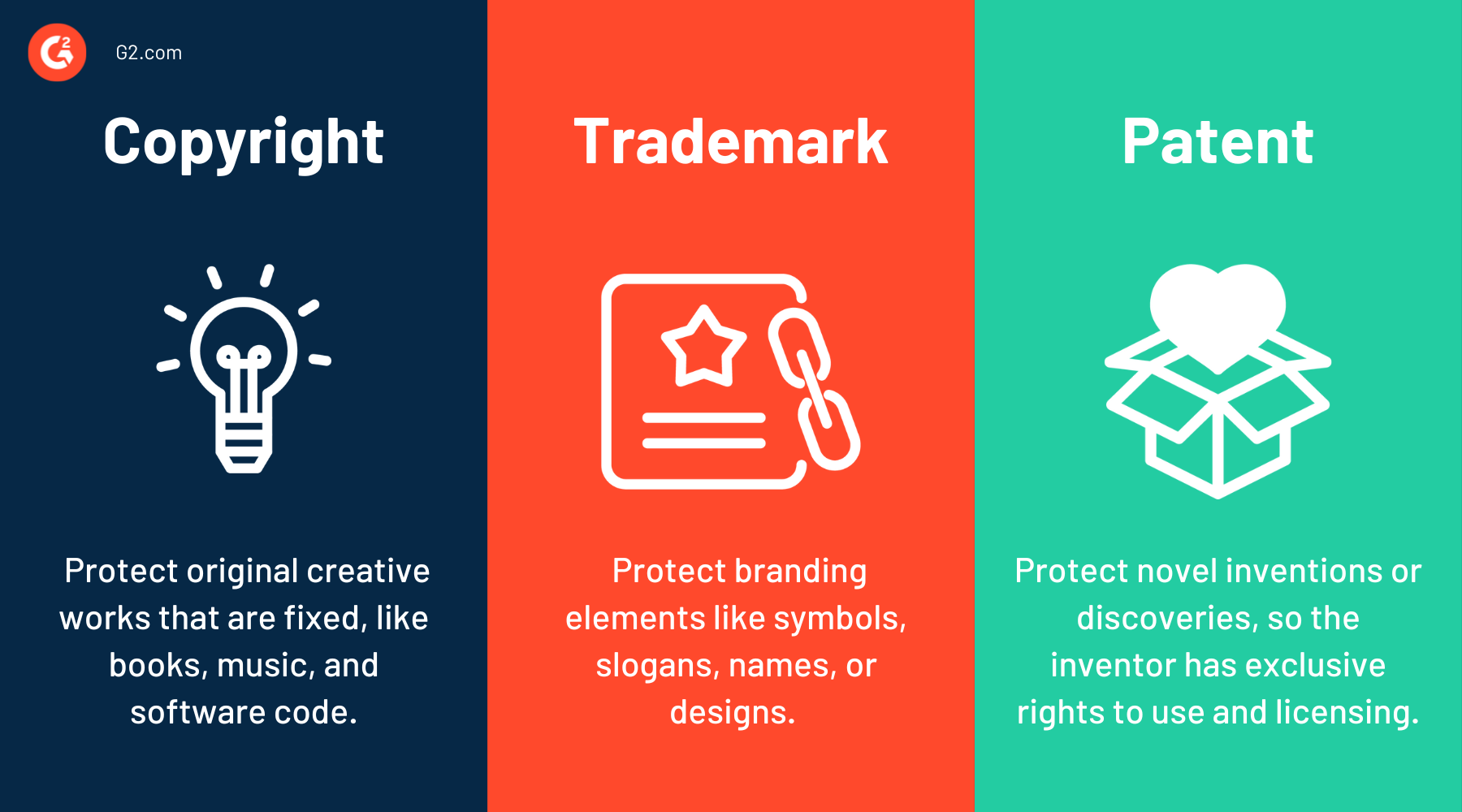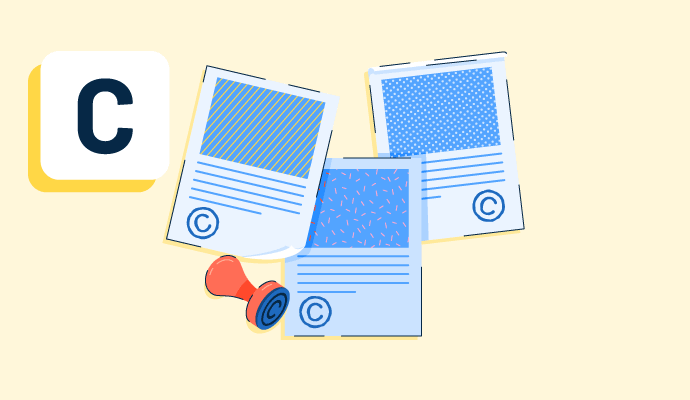What are copyrights?
Copyrights are the intellectual property (IP) rights a person has on their original creations. Copyrights give the creator the sole power to use, copy, or distribute their work.
In the United States, a person automatically has copyrights to their own work. For an additional layer of protection in a court of law, they can voluntarily register with the US Copyright Office.
Typically, a copyright lasts for the length of the owner’s life plus 70 years. After that point, the previously protected material enters the public domain, meaning anyone may use it without permission.
Intellectual property management software makes it simple for companies and law firms to monitor their copyrights, trademarks, and patents by centralizing information, automating forms, and following potential violations.
Basic elements needed to qualify for copyrights
Not all new works meet the requirements for copyrights. To register with the Copyright Office, a creation must be:
- Original. The work has to be the result of the creator’s own effort. It doesn’t have to be one-of-a-kind; it’s simply prohibited to directly copy another work.
- Creative. The work has to demonstrate an element of creative thought or effort. Even a small amount of creativity suffices.
- Fixed. The creator must have captured the work in a fixed way. This may be a digital or physical format that others can reproduce. For example, the work may exist on an audio recording, in a painting, or on a computer hard drive.
Types of work protected by copyrights
Copyrights give creators peace of mind that others won’t steal and profit from their work. Copyright law governs a wide range of works, including:
- Literature. Authors apply for copyrights for books, poems, essays, and articles.
- Art. Drawings, paintings, photographs, and sculpture are subject to copyright law.
- Music. Musicians and composers copyright musical compositions, including music, lyrics, and recordings.
- Film. The US grants copyrights for the visual aspects of movies, as well as the associated scripts.
- Dance. Choreography and dance routines qualify for copyrights.
- Graphic design. Logos, iconography, ads, digital illustrations, and computer graphics fall subject to copyright law.
- Software. Software code and computer programs meet the criteria as well.
Benefits of copyright registration
To get full copyright benefits, the creator must register their work. Advantages of registering for a copyright include:
- Ensuring legal protection. Registration offers strong legal proof of ownership, strengthening any legal action against unauthorized use in federal court.
- Establishing a public record. People can’t ask for permission to use or distribute a work if they don’t know who created it. By registering for a copyright, a creator lays an official claim to the work, deterring would-be infringers from using it without authorization.
- Becoming eligible for statutory damages. Registering a copyright makes the owner eligible for statutory damages and attorney’s fees in case of infringement. This makes the legal process more financially viable.
Copyright best practices
All creators technically have copyrights to their work, but they can take the following steps to ensure even greater protection. Copyright owners prevent unauthorized use when they register their copyright and follow these best practices:
- Understand their rights. Copyright law is nuanced. Copyright owners should read articles and watch videos to understand their rights, including how long the copyright lasts and what it protects.
- Use copyright symbols. Creators should place a copyright symbol (©), the year of creation, and their name on all published works. While the symbol is no longer required by law, it reminds others that the work is protected. If the notice exists on registered creative works, an infringer can’t use a defense of ignorance in a court of law.
- Apply digital watermarks. Digital media creators watermark their content to show ownership and prevent intellectual property theft. These watermarks can be a logo or company name or an “invisible” bit of embedded code.
- Monitor online and offline use. Copyright owners should keep tabs on how their work is used both offline (for example, the production of a play) and online (for example, music in social media videos). They can ask the infringer to remove it or talk to a lawyer if they spot unauthorized use.
- Consult with experts. For complicated situations, creators should talk with copyright lawyers. They specialize in navigating the application process and managing infringement claims.
Copyrights vs. trademarks vs. patents
Copyrights, trademarks, and patents all fall under the category of intellectual property, but there are clear distinctions between the three practices.

Copyrights protect original creative works that are fixed, like books, music, and software code. They give the creator exclusive use, reproduction, and distribution of their work.
Trademarks protect branding elements like symbols, slogans, names, or designs. They help consumers distinguish between companies and products and protect the company’s brand reputation.
Patents protect novel inventions or discoveries, so the inventor has exclusive rights to their use and licensing. While creators automatically benefit from copyrights and trademarks, inventors must undergo a detailed and rigorous application process to apply for a patent.
Learn more about the difference between copyrights and trademarks.

Kelly Fiorini
Kelly Fiorini is a freelance writer for G2. After ten years as a teacher, Kelly now creates content for mostly B2B SaaS clients. In her free time, she’s usually reading, spilling coffee, walking her dogs, and trying to keep her plants alive. Kelly received her Bachelor of Arts in English from the University of Notre Dame and her Master of Arts in Teaching from the University of Louisville.

-1.png)